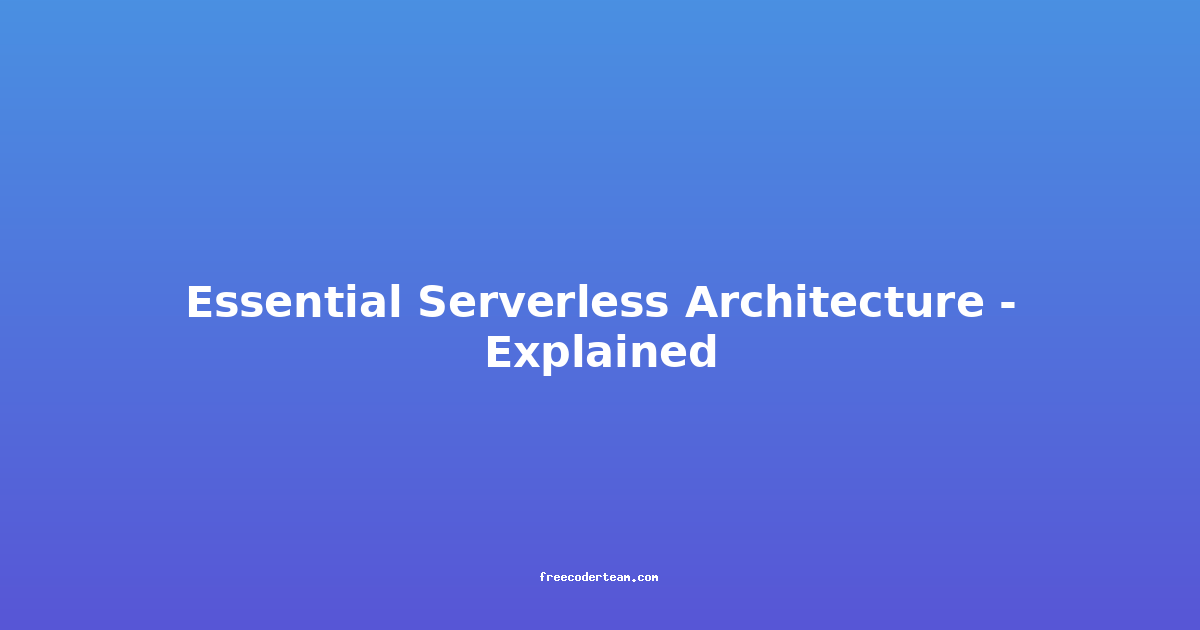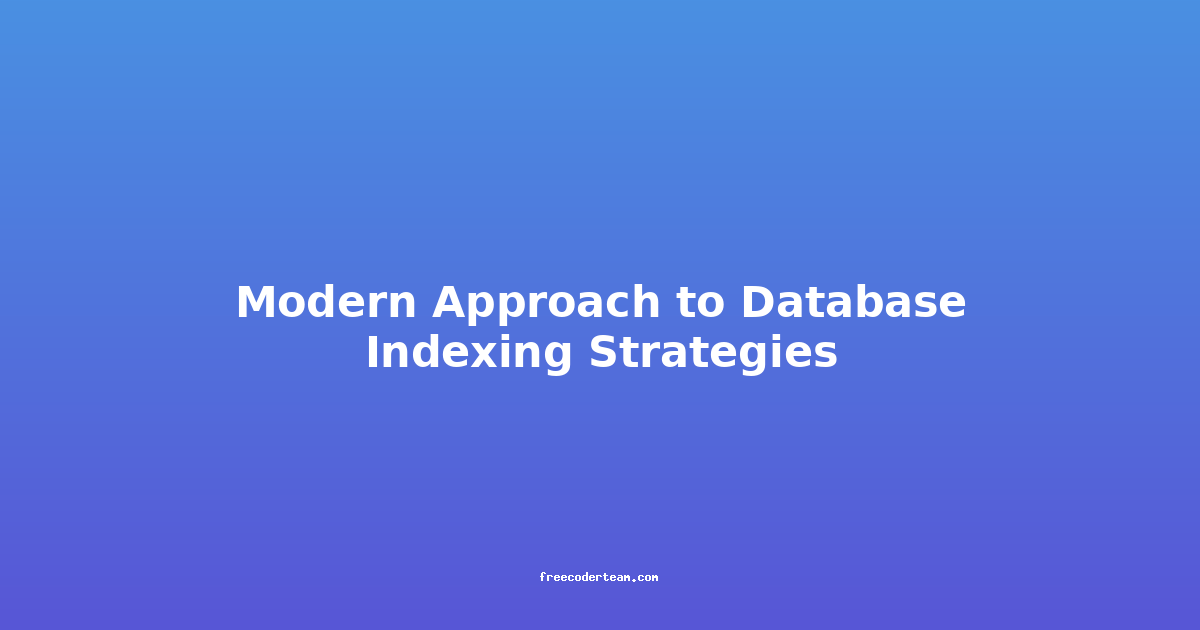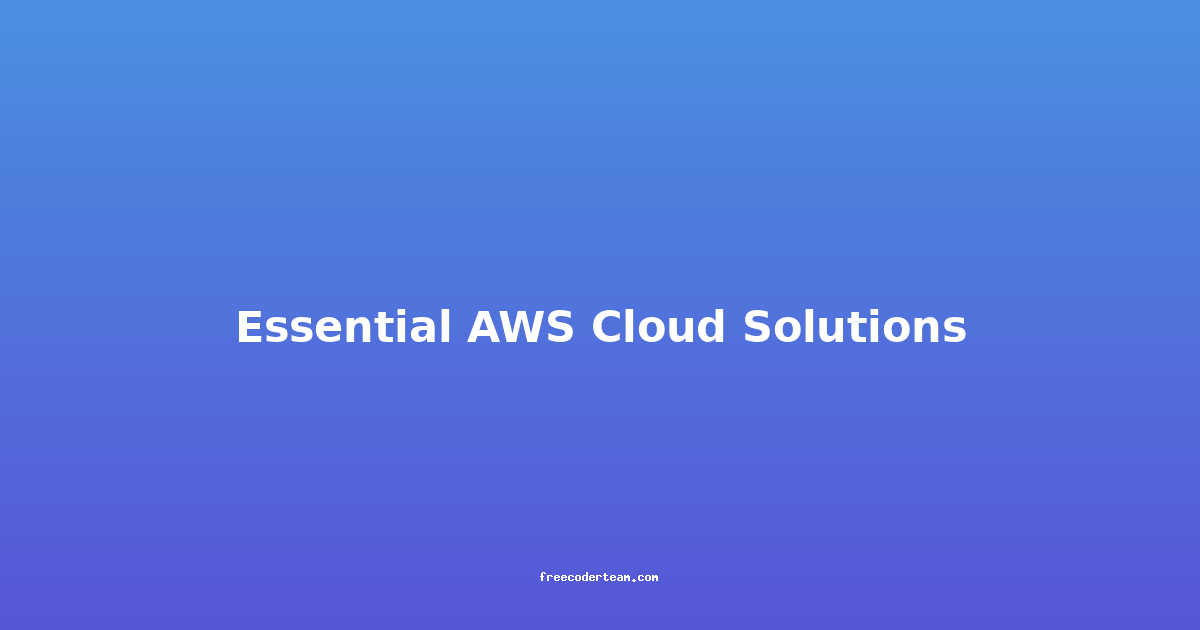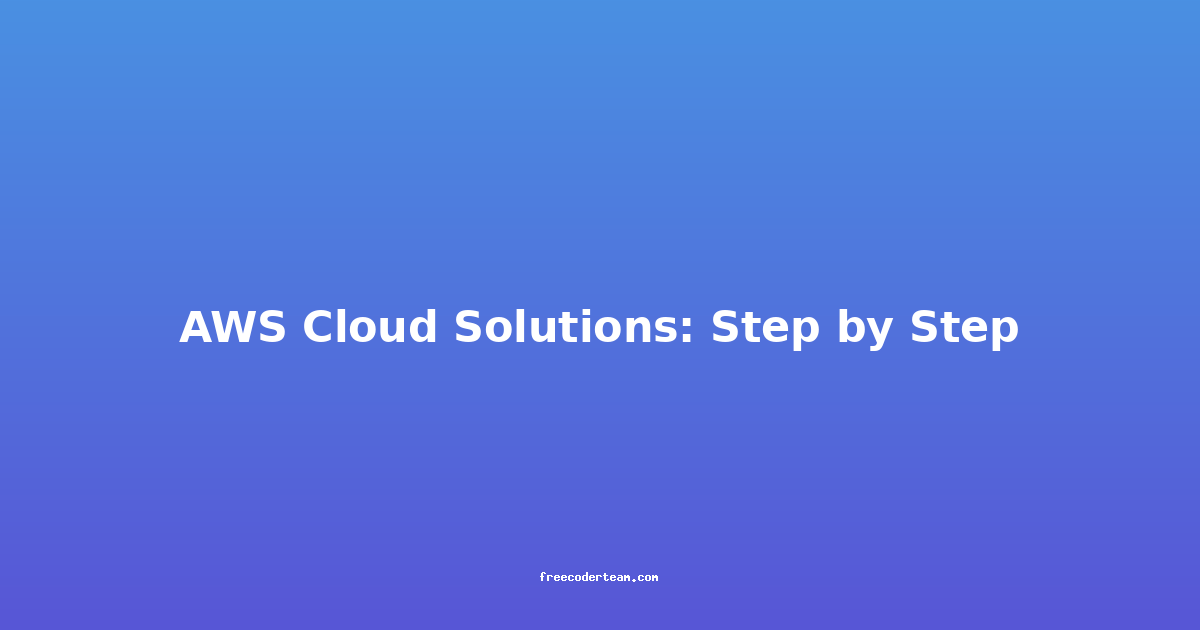Essential Serverless Architecture - Explained
Serverless architecture has become a cornerstone of modern cloud computing, offering a paradigm shift in how applications are built, deployed, and scaled. It promises cost-efficiency, scalability, and faster time-to-market by abstracting away the complexities of server management. In this comprehensive guide, we’ll explore the core concepts of serverless architecture, its benefits, practical examples, best practices, and actionable insights.
Table of Contents
- What is Serverless Architecture?
- Key Components of Serverless Architecture
- Benefits of Serverless Architecture
- Practical Examples of Serverless Architecture
- Best Practices for Building Serverless Applications
- Challenges and Limitations
- Conclusion
What is Serverless Architecture?
Serverless architecture is a cloud computing model where developers build and run applications without having to manage the underlying infrastructure. Instead of provisioning and maintaining servers, developers focus on writing and deploying code as small, independent functions or services. The cloud provider dynamically allocates and manages the necessary resources based on demand.
The term "serverless" doesn’t mean there are no servers involved—servers still exist and are managed by the cloud provider. The key difference is that developers don’t interact with or manage them directly.
Key Characteristics:
- Function-as-a-Service (FaaS): Applications are broken down into small, stateless, event-driven functions. These functions are triggered by events, such as HTTP requests, file uploads, or database changes.
- Pay-as-you-go Pricing: You only pay for the compute resources consumed when your functions are executed, reducing costs for idle time.
- Automatic Scaling: Cloud providers automatically scale functions up or down based on demand, ensuring optimal performance without manual intervention.
Key Components of Serverless Architecture
To understand serverless architecture, it’s essential to familiarize yourself with its core components:
1. Function-as-a-Service (FaaS) Providers
FaaS providers offer platforms for running serverless functions. Popular examples include:
- AWS Lambda: AWS’s FaaS platform, which supports multiple programming languages like Node.js, Python, Java, and Go.
- Google Cloud Functions: Provides serverless functions for developers using Node.js, Python, and Go.
- Azure Functions: Microsoft’s serverless platform, supporting .NET, Node.js, Python, and Java.
- Firebase Functions (Google): A serverless backend for Firebase apps, often used for real-time processing and integrations.
2. Event-Driven Triggers
Serverless functions are triggered by events. Common event sources include:
- HTTP requests (API Gateway)
- File uploads (AWS S3, Google Cloud Storage)
- Database changes (AWS DynamoDB, Firebase Realtime Database)
- Scheduled tasks (AWS CloudWatch Events, Google Cloud Scheduler)
- IoT device events
3. Stateless Functions
Serverless functions are designed to be stateless, meaning they don’t retain data between invocations. This ensures functions are scalable and can handle bursts of traffic without managing state.
4. Backend Services
Serverless applications often rely on managed backend services provided by cloud providers, such as:
- Database Services: AWS DynamoDB, Google Firestore, Azure Cosmos DB
- Authentication: AWS Cognito, Firebase Authentication
- Messaging: AWS SNS, Google Pub/Sub
- Storage: AWS S3, Google Cloud Storage
Benefits of Serverless Architecture
Serverless architecture offers several advantages that make it appealing for modern application development:
1. Cost Efficiency
- Pay-as-you-go: You only pay for the compute time when functions are executed. No costs for idle servers.
- Resource Optimization: No need to provision or over-provision servers for peak traffic.
2. Scalability
- Automatic Scaling: Functions scale up or down based on demand, ensuring performance without manual intervention.
- Global Reach: Serverless functions can be deployed globally, reducing latency for users in different regions.
3. Rapid Development
- Focus on Code: Developers can focus on writing business logic without worrying about infrastructure.
- Fast Deployment: Serverless functions can be deployed quickly, enabling faster time-to-market.
4. Operational Simplicity
- No Server Management: Cloud providers handle server provisioning, updates, and maintenance.
- High Availability: Cloud providers ensure high availability and reliability.
Practical Examples of Serverless Architecture
Let’s look at some real-world scenarios where serverless architecture is used effectively.
Example 1: Image Processing Pipeline
Problem: You need to process user-uploaded images by resizing them and storing the processed images in a cloud storage bucket.
Solution:
- Trigger: When a user uploads an image to an S3 bucket, an event is generated.
- Function: An AWS Lambda function is triggered by the S3 event. The function retrieves the image, processes it (e.g., resizing), and uploads the processed image to another S3 bucket.
- Backend Services: AWS S3 is used for storage, and AWS Lambda handles the processing logic.
Code Example (AWS Lambda in Python):
import boto3
from PIL import Image
import os
import uuid
s3_client = boto3.client('s3')
def resize_image(bucket, key):
# Download the image from S3
temp_file = f"/tmp/{uuid.uuid4()}.jpg"
s3_client.download_file(bucket, key, temp_file)
# Resize the image
with Image.open(temp_file) as img:
img.thumbnail((200, 200))
img.save(temp_file, "JPEG")
# Upload the resized image to S3
resized_key = f"resized/{key}"
s3_client.upload_file(temp_file, bucket, resized_key)
# Clean up temporary files
os.remove(temp_file)
def lambda_handler(event, context):
bucket = event['Records'][0]['s3']['bucket']['name']
key = event['Records'][0]['s3']['object']['key']
resize_image(bucket, key)
return {
'statusCode': 200,
'body': 'Image resized successfully!'
}
Example 2: Real-Time Chat Application
Problem: Build a real-time chat application where messages are sent and received instantly.
Solution:
- Trigger: When a user sends a message, the application triggers a serverless function.
- Function: The function processes the message, stores it in a database, and broadcasts it to other users.
- Backend Services: Firebase Functions for real-time processing, Firebase Realtime Database for message storage, and Firebase Cloud Messaging for notifications.
Code Example (Firebase Function in Node.js):
const functions = require('firebase-functions');
const admin = require('firebase-admin');
admin.initializeApp();
exports.sendMessage = functions.database.ref('/messages/{userId}/{messageId}').onCreate((snapshot, context) => {
const message = snapshot.val();
const userId = context.params.userId;
// Broadcast the message to all users
return admin.messaging().sendToTopic('general', {
notification: {
title: 'New Message',
body: message.text
}
});
});
Best Practices for Building Serverless Applications
While serverless architecture offers many benefits, it’s important to follow best practices to ensure optimal performance and maintainability.
1. Design for Statelessness
- Keep Functions Stateless: Each function invocation should be independent and not rely on shared state.
- Use Managed Services: Leverage cloud services like databases and messaging systems to manage state.
2. Optimize Cold Starts
- Cold Starts: The delay when a function is first invoked after being idle. To minimize cold starts:
- Use provisioned concurrency (AWS Lambda) or reserved instances (Google Cloud Functions).
- Keep functions small and focused on specific tasks.
3. Monitor and Log
- Instrumentation: Use tools like AWS CloudWatch, Google Cloud Monitoring, or Azure Application Insights to monitor function performance.
- Logging: Enable detailed logging to troubleshoot issues. Use services like AWS CloudWatch Logs or Google Stackdriver.
4. Test Locally
- Local Testing: Use tools like AWS SAM Local or Google Cloud Functions Emulator to test functions locally before deploying.
- Unit Tests: Write unit tests for function logic to ensure reliability.
5. Security
- Least Privilege Principle: Grant functions only the permissions they need to perform their tasks.
- Authentication and Authorization: Implement token-based authentication (e.g., JWT) and role-based access control.
6. Cost Management
- Monitor Usage: Use cost monitoring tools to track function invocations and usage.
- Set Limits: Define concurrency limits and rate limits to prevent excessive usage.
Challenges and Limitations
Despite its advantages, serverless architecture has some challenges:
1. Vendor Lock-in
- Cloud Provider Dependencies: Serverless solutions are tightly coupled with cloud providers, making it difficult to switch providers without significant refactoring.
2. Cold Starts
- Latency: Cold starts can introduce latency, especially for functions with large dependencies or initialization overhead.
3. Complexity in Debugging
- Stateless Nature: Debugging can be challenging due to the stateless nature of functions and the lack of persistent debugging environments.
4. Limited Runtime
- Function Execution Time: Some providers impose limits on function execution time (e.g., AWS Lambda has a maximum of 15 minutes).
5. Cold Start Optimization
- Provisioned Concurrency: While provisioned concurrency helps, it adds complexity and cost.
Conclusion
Serverless architecture is a powerful paradigm that simplifies application development by abstracting away server management. By leveraging FaaS platforms, event-driven triggers, and managed backend services, developers can build scalable, cost-efficient, and maintainable applications.
While serverless architecture offers many benefits, it’s important to consider its limitations and follow best practices to ensure optimal performance. As cloud providers continue to innovate, serverless will remain a vital tool for modern application development.
By understanding the core concepts, practical examples, and best practices outlined in this guide, you’ll be well-equipped to leverage serverless architecture for your next project.
Feel free to explore more resources and experiment with serverless functions on platforms like AWS, Google Cloud, or Azure to gain hands-on experience!




